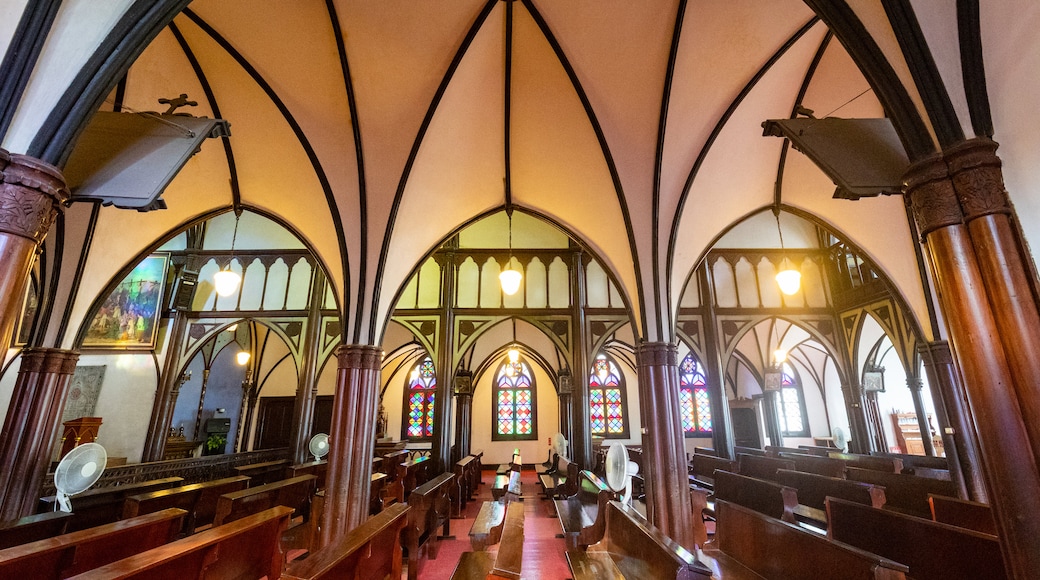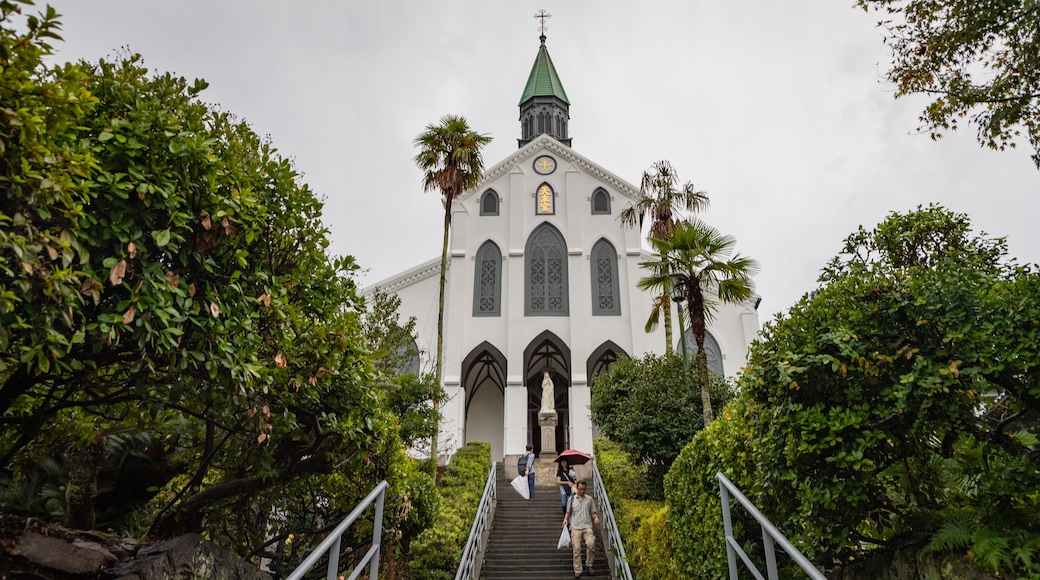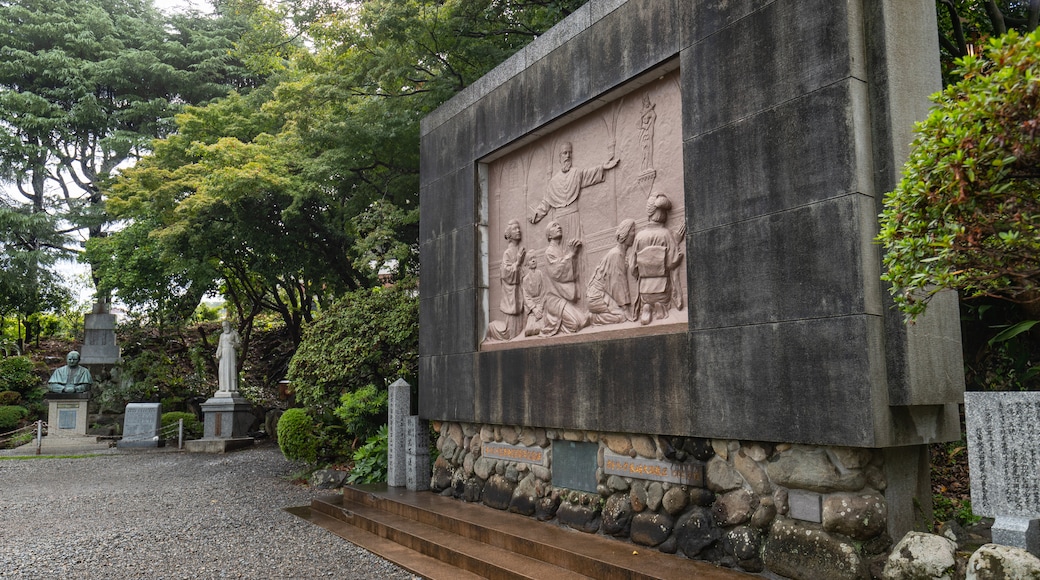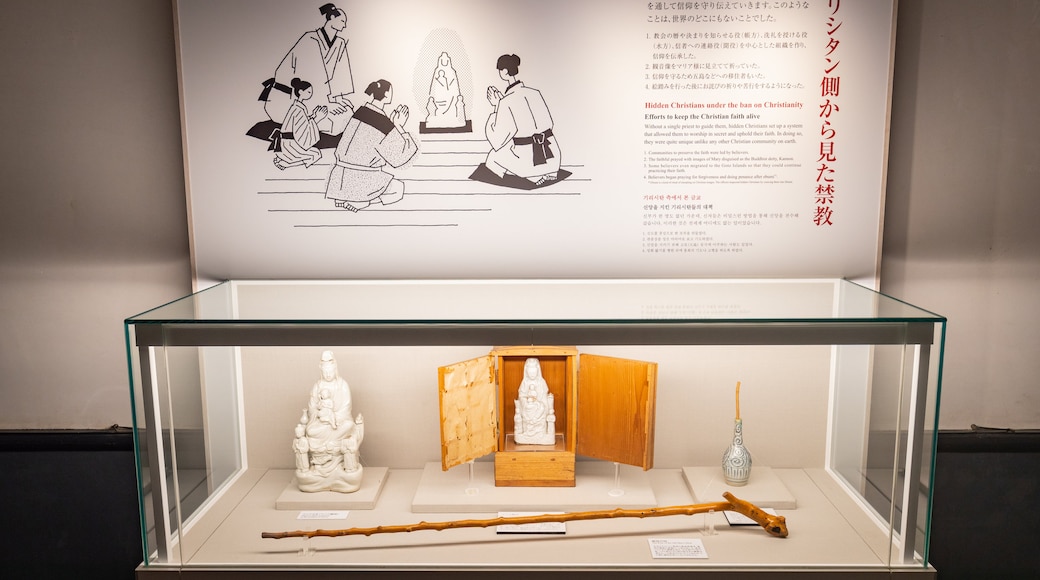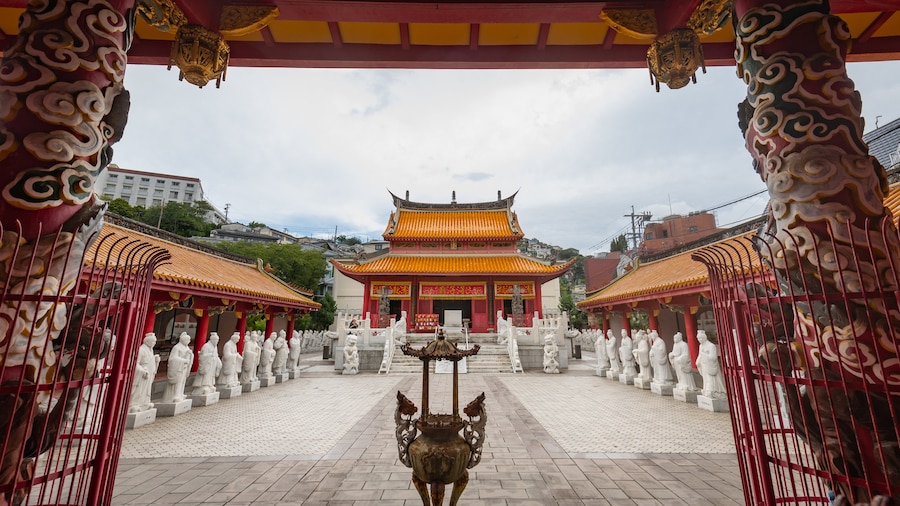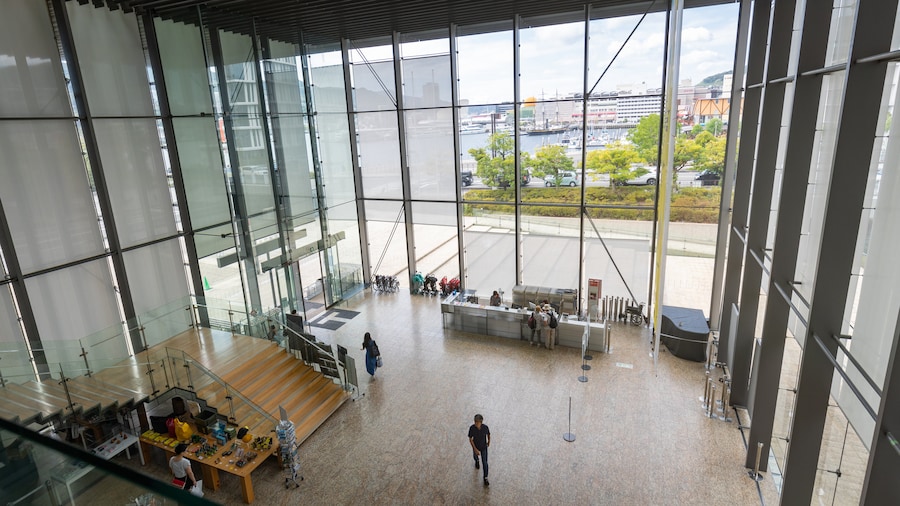About three centuries after people were killed for their religious beliefs, this church was built to honor them. Visit Japan’s oldest church of its type.
Oura Church in Nagasaki is the site of what was described by a pope as the Miracle in the East, referring to a group of people who identified themselves to a priest as Christians in 1865. Imagine the devotion these so-called Hidden Christians possessed to keep their belief intact in a country that had banned their faith centuries earlier.
In the 16th century, Portuguese missionaries brought Christianity to Japan’s shores. Soon thereafter the ruler prohibited the religion and ordered the crucifixion of 26 martyrs.
Japan became tolerant in the 19th century and French Jesuits replaced the original simpler religious structure with another. In 1879, the current structure was erected with its gothic lines constructed from stucco and wood.
Stand near the church’s bronze statue that faces another statue on Nishizaka Hill in the area where the martyrs died. Notice the bronze relief memorial to the Hidden Christians just below the church.
Tour inside to see the exquisite interior with its French stained-glass windows from the period. Many of the original windows were shattered by the atomic bomb, with some later installed as replacements from the same period.
This is Japan’s oldest existing wooden church and received national treasure status in 1933, making it the first Western-style building to get this distinction. The Vatican also recognized the site in 2016 as being a minor basilica for its historical significance.
Walk a short distance from the Ouratenshudo-shita or Ishibashi tram stops to find the church. It’s also not far from the cruise ship terminal and Glover Garden.
Oura Church is also known as Oura Cathedral, the Church of 26 Martyrs. It’s open every day. Admission includes the museum with its displays on Christianity in Japan.
Visit the other nearby sites on Christianity in Japan, which include the Twenty-Six Martyrs Museum and Monument, Nishizaka Hill and Nishizaka Church.
